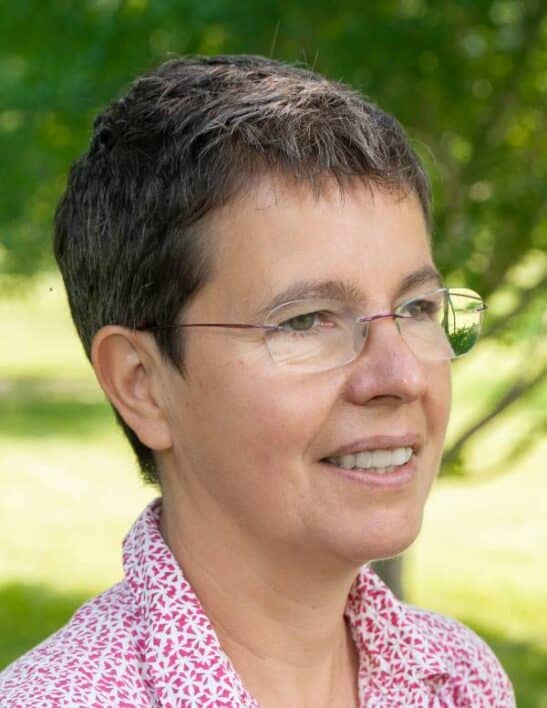The energy price and supply risks we are facing today are making the decarbonisation of the power sector by 2035 an even more significant challenge. But if we deviate the heading of our ship from the course for longer than necessary, we will lose the course we set for ourselves: cost-efficient power sector decarbonisation writes Zsuzsanna Pató.
The energy price crisis and the war in Ukraine opened a whole new dimension for the need to get off fossil fuels, alleviate energy poverty and assure reliable energy service for consumers. Pursuing these multiple objectives has always been challenging, but the urgency of action adds another facet: we need to accelerate power system decarbonisation and achieve a 75% renewable share by 2030.
We must ensure that the responsive, short-term actions taken to meet today’s security and price challenges are directionally correct for the long-term vision: a decarbonised and well-functioning economy by 2050. Building soon-to-be abandoned fossil infrastructure now is costly.
Similarly, distorting the merit order by capping gas prices slows down the replacement of fossil fuel capacities with clean resources. The scale of the challenge and the ‘need for speed’ is unprecedented. Old thinking will not deliver the new energy system we need.
With that in mind, RAP has developed a Blueprint for a decarbonised European power system, including the necessary regulatory solutions to navigate there by 2035.
A new baseline for clean investments
Recent events revealed the actual cost of gas. This is the new baseline for investment decisions into clean energy solutions. Gas and other fossil fuel prices can jump on a rollercoaster at any time and take Europe for a ride.
Decarbonising the energy system means decarbonising power generation first. Renewable-based generation technologies are proven technologies, and their costs continue to decrease steadily. The most efficient way of decarbonising heating and transport is via electrification. Both of these end-uses rely on imported fossil fuels in Europe.
Climate policy is now security policy
Rapidly displacing fossil fuels, including Russian gas, with renewable power generation capacity has its own challenges. It requires the parallel pursuit of the goals of minimising the cost of the transition, maintaining a reliable power system and safeguarding the equitable distribution of cost and benefits among consumers while alleviating existing inequalities. The ‘great energy capacity swap’ rests on a few key tenets explored below.
The basics of a zero-emissions power system
The core coordination mechanisms are markets and prices. Creating an integrated European power market has already delivered large benefits to European consumers. Prices — that are granular in time and space — are key in optimising production and consumption decisions and responses. The core European power market model is not broken and does not need a fix. However, it requires some safeguards and reinforcements to protect customers from extreme price impacts and ramp up the speed of change.
Energy Efficiency First must take its place as a key overarching principle, not just a slogan or a new name for energy efficiency. To minimise total system costs, the most efficient solution needs to be chosen from the pool of supply, storage and demand options when balancing the system, providing grid services and ensuring resource adequacy.
Low-cost management of a renewable-based power system needs a lot of flexibility from all possible sources: generation, storage and demand. Faster and larger markets further facilitate the integration of variable generation.
Consumers must wear two hats. They are the ultimate vendors, so they should be empowered to define what energy services they need. They also offer essential new system resources by their demand, storage and generation capabilities.
More grid and more generation assets will virtually always equal more reliability, but we need to ask if the gains are large enough to justify the costs each time. Optimal resource adequacy means full transparency over the cost of marginal supply-side capacity and full recognition of the value of demand-side flexibility. Thriving forward markets are key in triggering investment based on consumer choice and — unlike capacity mechanisms — without running the risk of supporting non-economic/fossil units.
Europe has ambitious offshore wind development plans. Scaling up requires new thinking: joint grid planning with anticipatory investment, multipurpose grid use (interconnection and linking wind parks onshore) and single system operation.
Power System Blueprint
RAP pulled the essential building blocks of a future zero-emissions power system in Europe by 2035. The Power System Blueprint takes a systems view, sketching out an integrated plan of regulatory solutions essential for a transition that is efficient and equitable. The solutions are designed to galvanise the dirty-for-clean capacity swap, optimise network investment and safeguard efficient spending and consumption decisions through transparent pricing. They are offered up as a toolbox to assist EU and national regulators as they identify the next steps and formulate strategies, each with its own starting points and priorities.
Conclusion
The war in Ukraine drastically changed the public discourse on energy — systems and markets. Calls for stepping back from the transition as planned to reconsider the fundamentals of markets are myopic. At this pivotal moment, it is incumbent on us to accelerate the transition while safeguarding consumers from extreme price impact while needed. Whenever you decide on next steps, you should keep the eyes on the horizon. Always. Not only on the direction of the wind.
This article previously appeared in Euractiv.

